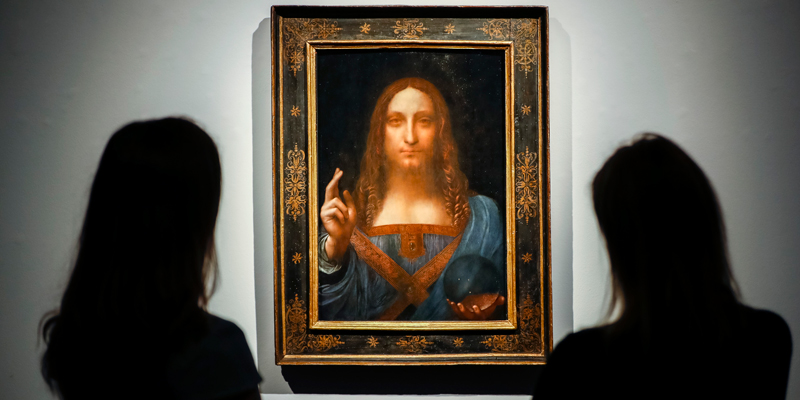Here’s where you’ll be able to find the record-breaking Dhs1.65 billion work by da Vinci.
It only opened its doors last month, but the Louvre Abu Dhabi is already a force to be reckoned with in the art world.
The museum, located on the capital’s Saadiyat Island, displays a wealth of notable works on its walls, but it’s about to get a particularly significant piece.
Read:
The best of the red-carpet action from the opening night of DIFF
Ladies of the Louvre: A guide to the museum’s female-focused pieces
The Louvre Abu Dhabi will soon welcome the world’s most expensive painting sold at auction, the gallery revealed on Twitter this week.
Salvator Mundi by iconic Renaissance artist Leonardo da Vinci sold for a whopping US$450 million this November, unseating Pablo Picasso’s Women of Algiers, for which US$179.4 million was paid at auction in 2015.
Interchange by Willem de Kooning—which changed hands privately in 2015—had also previously held the title of the painting with the highest known sale price, at US$300 million.
Da Vinci’s Salvator Mundi is coming to #LouvreAbuDhabi pic.twitter.com/Zdstx6YFZG
— Louvre Abu Dhabi (@LouvreAbuDhabi) December 6, 2017
Salvator Mundi depicts an image of Christ, and is the only work of da Vinci currently in private hands (there are only fewer than 20 paintings by the Italian master known to exist in total).
It was bought by Saudi Arabian Prince Bader bin Abdullah bin Mohammed bin Farhan al-Saud at auction in London last month, the New York Times has revealed.
The piece dates from around 1500 and was previously owned by King Charles I of England, and exchanged hands for just US$60 back in 1958. It was restored and confirmed as an authentic da Vinci in 2005.
Read:
10 of the best beach clubs and pools in Dubai
Why you can’t miss an iconic art exhibition in Dubai this month…
It’s not yet known exactly when the da Vinci work will be displayed at the UAE museum, which is the only other Louvre outside of Paris, but we’ll keep you updated.
The museum currently features more than 600 artworks, as well as 300 masterpieces on loan from 13 French galleries that will rotate throughout the year.
Images: Getty











